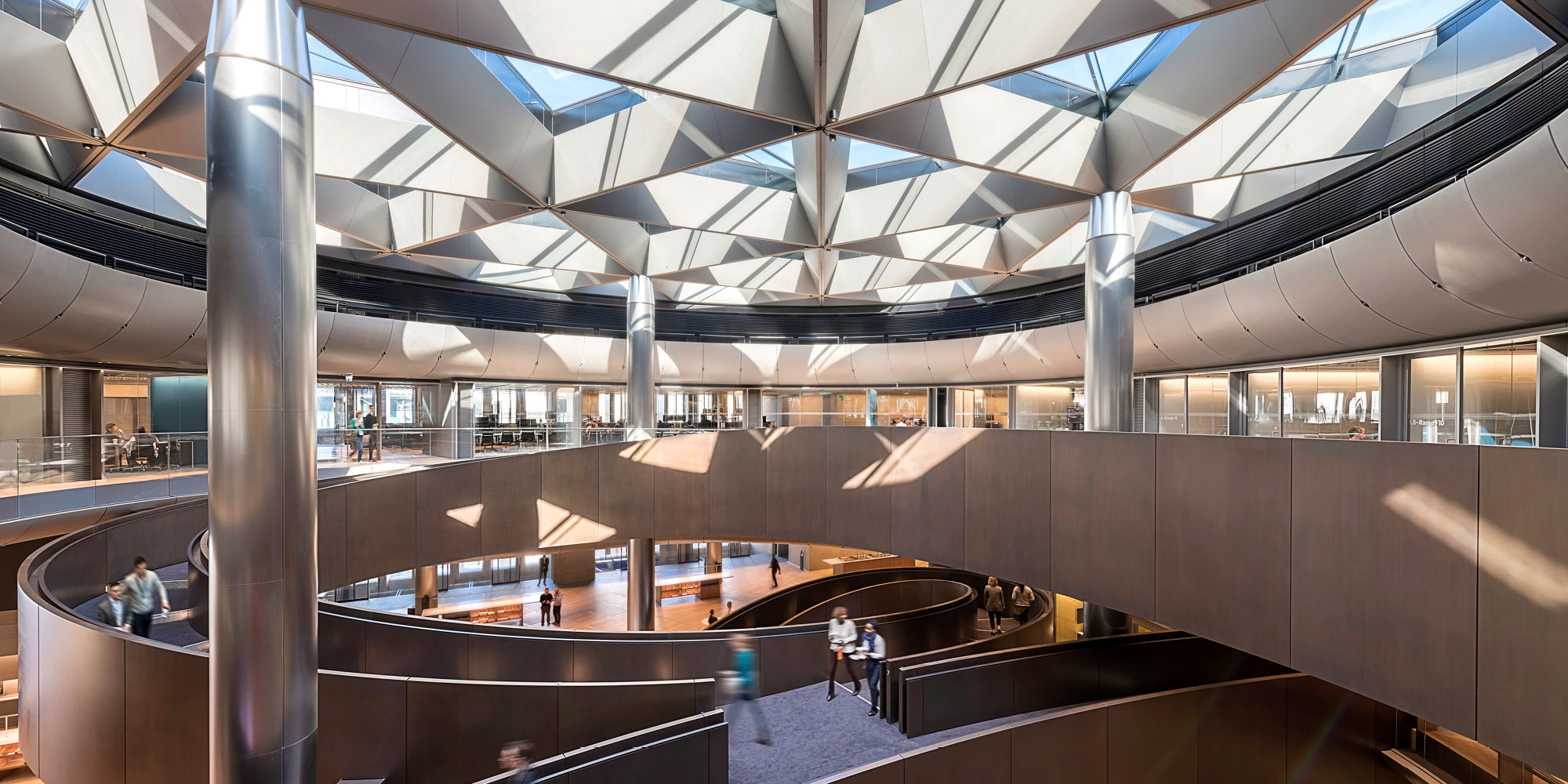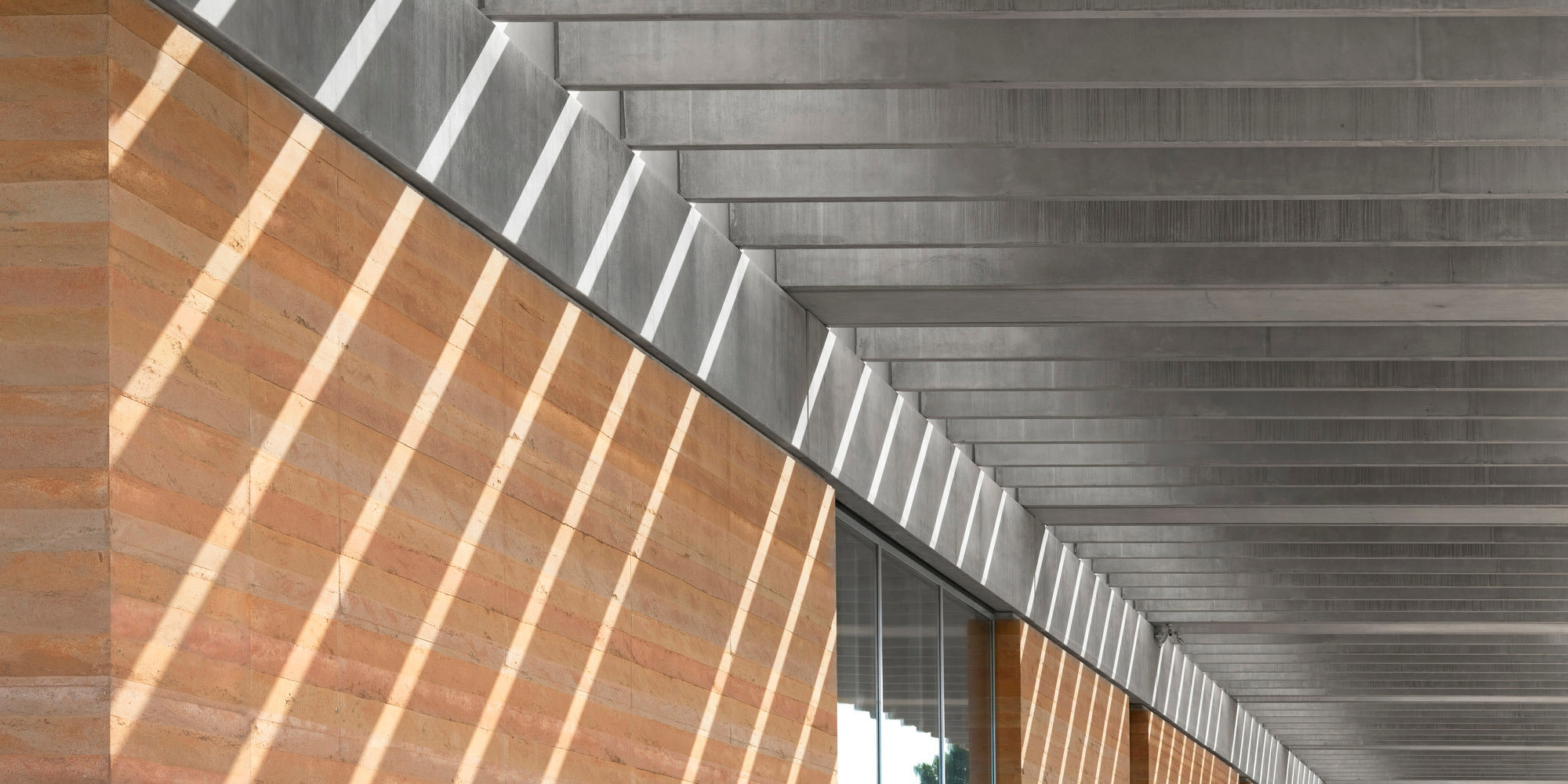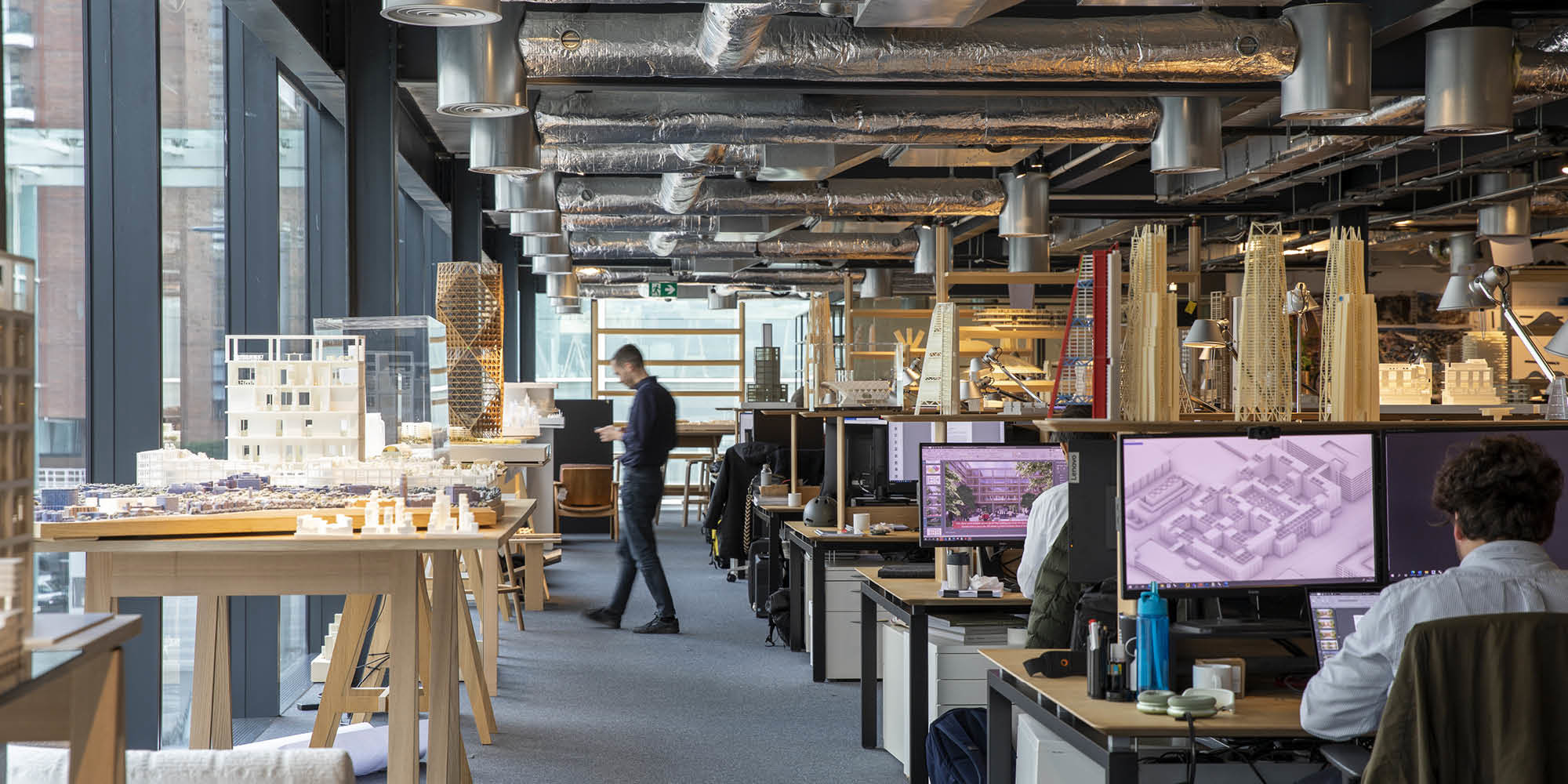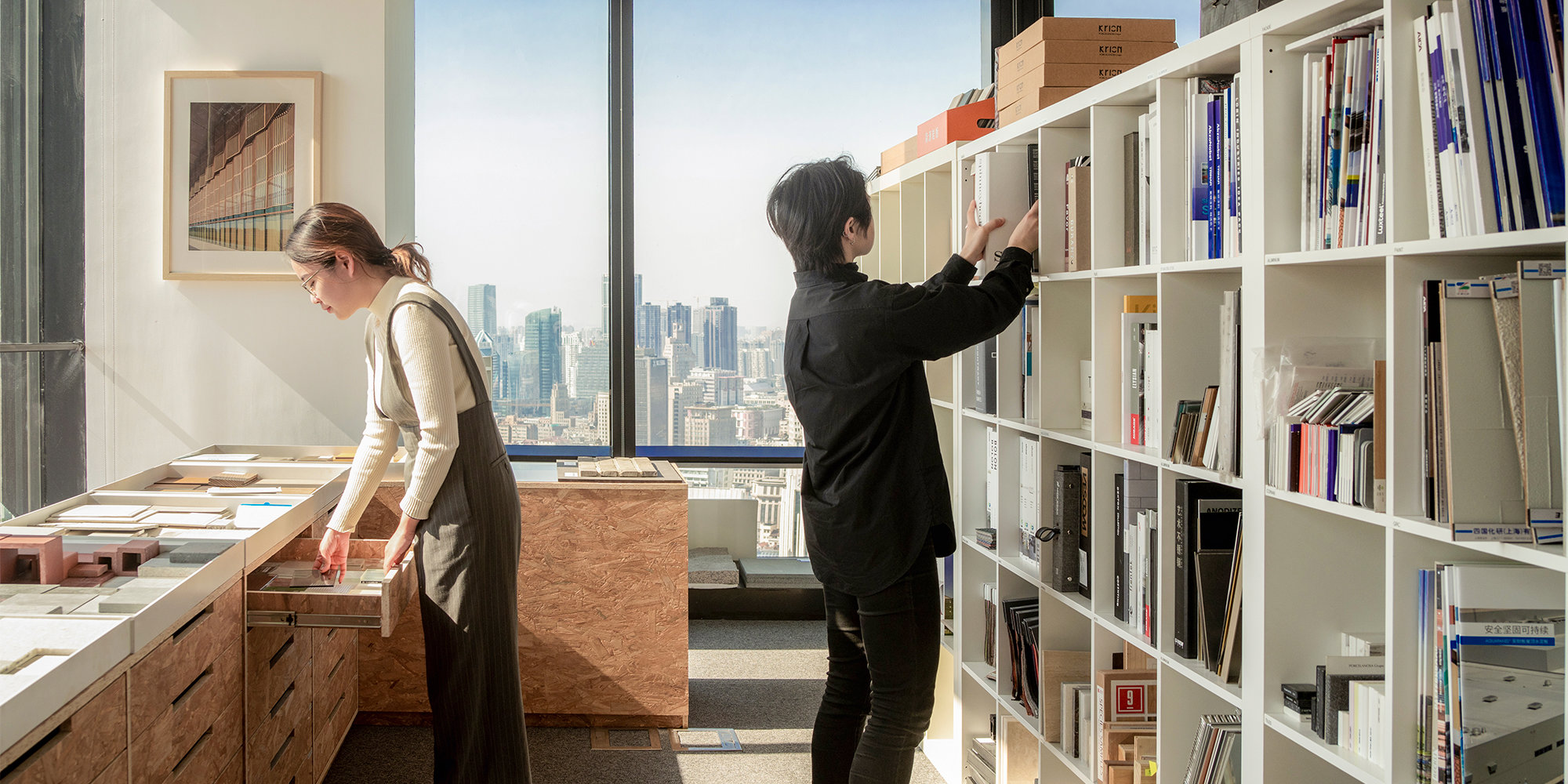As winners of an invited competition, Foster and Partners were commissioned by Slough Estates to create a 120,000 square feet office development in a forest setting at Kingswood, Ascot. Kingswood is close to the M3 and the M4, not far from London and within the Green Belt. Set back from the main road, the site is in the midst of wooded heathland.
This ecologically sensitive site was previously cleared and occupied by industrial sheds. An important aspect of Foster and Partners' scheme was to position the buildings within the existing clearing and also restore the scarred areas as dry, acid heathland by re-integrating the site with its wooded surroundings. As well as designing three new buidlings, the architects have introduced new landscaping and have planted over 68,000 specimens including conifer, birch, oak, heather and ferns on gently undulating banks. The forested parts of the site that survived earlier development have been carefully protected and only those areas already disturbed have been built over. Wherever possible, existing trees have been preserved.
The objective has been to design offices that are economic, environmentally efficient and flexible, in buildings that create an elegant and understanded counterpoint to their wild setting. A key aim was a sense of community which would draw the buildings and a potential variety of tenants together, in their woodland 'settlement'.
The broad curve of the approach road, banked on either side to screen the scheme's three car parks and draw the visitor deep into the site, leads into a forest clearing, a circular space from which the three buildings radiate. This space is a drop-off point and gives access to the offices, but it is also the focal point of the complex, around which the buildings gather. Here at the centre of the circular space, the heart of the scheme, is a 75-metre-wide turf-covered earthwork, a broad hollow around which a grassy terrace gently spirals down to its base. This man-made sculptural form, carved from the landscape, contrasts with the natural beauty of the wilderness that surrounds it and is suggestive of the social, organisational and creative aspects of a business community. A social focus, it may be used for sitting and recreational, and as an amphitheatre.
The scheme's three office buildings are of equal height and, at three storeys high, stand lower than most of the trees that surround them. On the exterior, their glass facades reflect the trees and vegetation while, from the inside, the transparency of the buildings gives views through and out, in several directions. At the rear of two of the buildings, long 'fingers' extend back into the woodland, rooting them deep into their setting and giving the user a feeling of being part of the forest. The atmosphere of the buildings is cool and calm, and in spite of their crisp, linear clarity, they sit in harmony with their natural context - a quality that will increase as the new planting on the site grows and blends with the existing environment.
In plan, each building is in the form of a wide-angled 'V', with the entrance at the centre where it is most recessed. The entrances open into high, light-filled atria which, with their rounded back walls, echo the circular theme introduced in the landscape feature outside. The atria contain lifts and circular staircases and, overlooked by balconies, form the social nuclei of the buildings. At the perimeter of each atrium, a curved walkway, illuminated by the arc of a continuous rooflight, gives onto the highly functional and adaptable rectangular office floors.
The buildings have been designed on a 'shell and core' principle, whereby core areas are fitted out, but the general fit-out is left for the leaseholder to arrange. The proportion of useable net space to the gross area of each building is high. The buildings can be divided up for letting in a variety of configurations (for example, floor by floor, or wing by wing) and their 15-metre-deep floorplates are flexible enough to be organised in many different ways.
The buildings are of concrete structure with steel, aluminium and glass cladding. Prominent brises soleils, 1.7 metres in depth, offer protection against glare and lend definition to the facades. The end cores, which contain the stairs, toilets and plant, are clad in aluminium louvres.
Ecological and environmental sensitivity is central to the buildings' design. Issues including shading, ventilation and thermal mass have been strongly emphasised, and the scheme has achieved an excellent British Research Establishment Environmental Assessment Method (BREEAM) rating. The 15-metre-deep floorplates offer the optimum dimensions for natural ventilation, while the heigh between the floors - 3.9 metres - allows a high degree of flexibility both in the fit-out and in the choice of environmental systems. The buildings can be adapted for entirely natural ventilation, or for full or partial air-conditioning, according to needs. The spandrel panels on the exterior are designed, if required, to allow air infiltration to cool the mass of the concrete structure, as part of a natural ventilation system.









